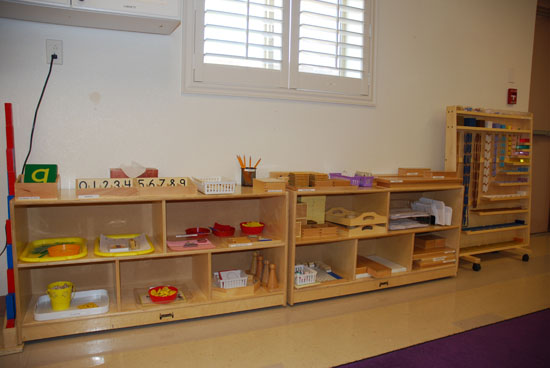
Montessori Math Materials

The math materials in a Montessori classroom are beautifully and uniquely designed. They allow for a child to successfully grasp mathematical concepts concretely as they progress towards abstract ones. Materials are developed from simple to complex. Process is taught first then facts.
Children work at their own pace developing concentration and order as they readily grasp mathematical concepts. These will benefit them throughout their life, as one must have a good understanding of each skill learned before moving on to the next, continuously building upon previously learned concepts.
It always amazes me to watch children work with these materials and begin building that strong foundation for a variety of math skills. It is such a fantastic way to learn. Children have fun and are excited about math when it is presented with such wonderful materials. Below are some past pictures of children working with some of these beautiful materials.
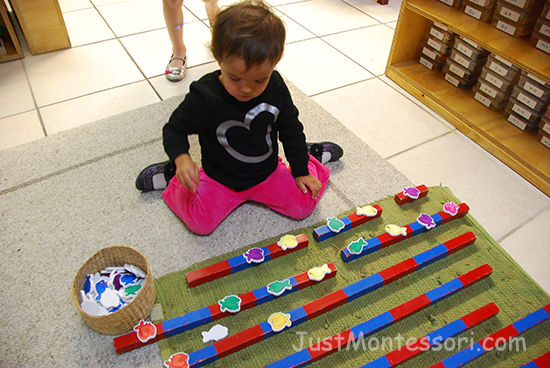

An extension to the number rods is to place an object to count out and place onto each rod’s red and blue space as they count each rod. It is nice to change out the objects to be counted that perhaps are seasonal such as snowflakes or say small frogs during the unit study on amphibians.
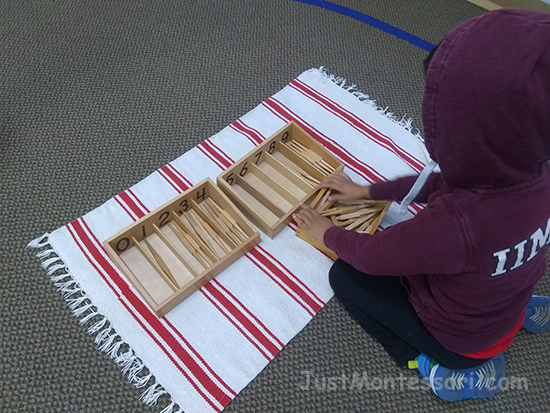
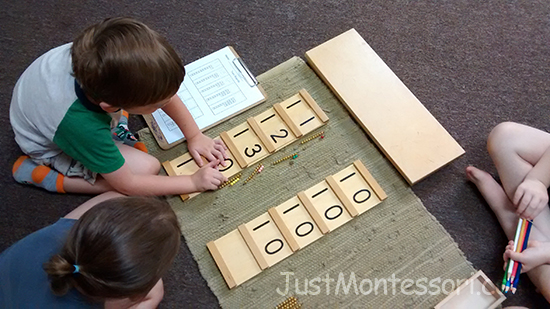
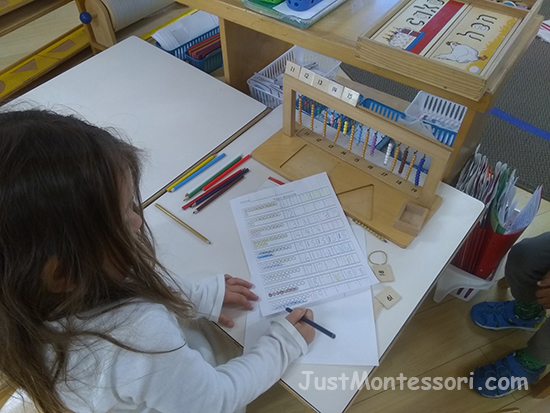
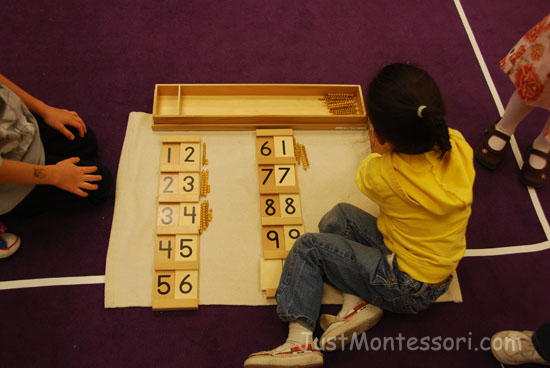
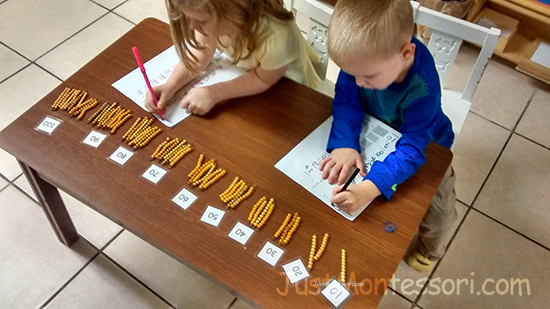
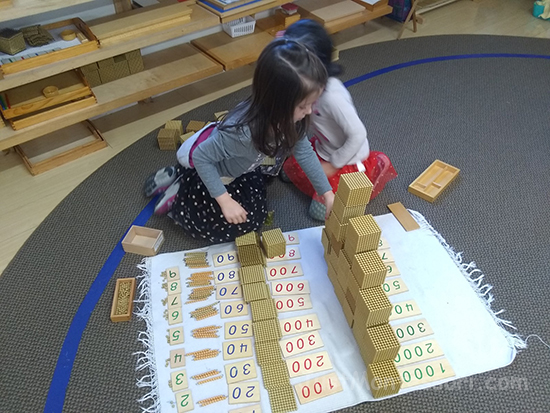
Using the golden bead materials, children count out ones, tens, hundreds, and thousands.
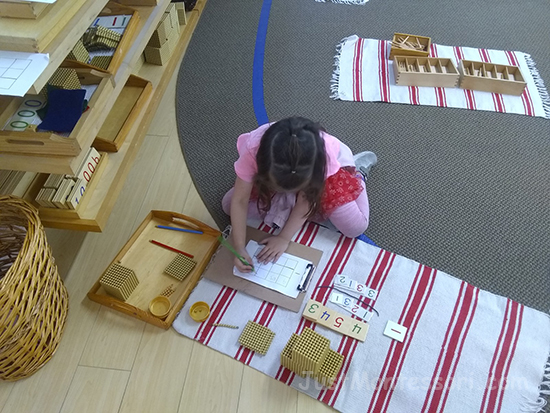
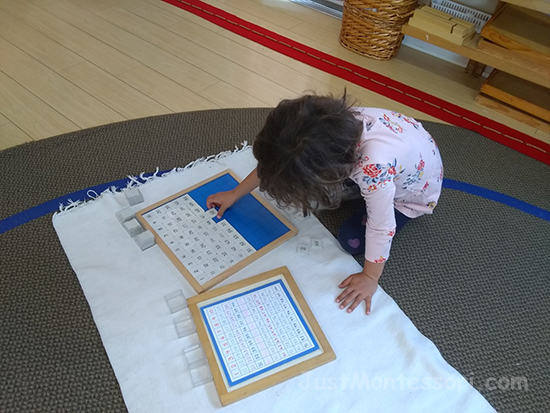
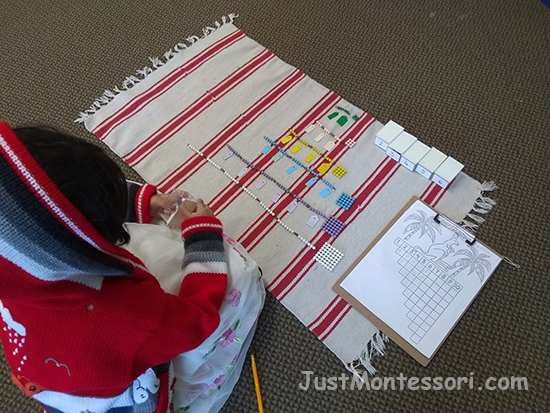
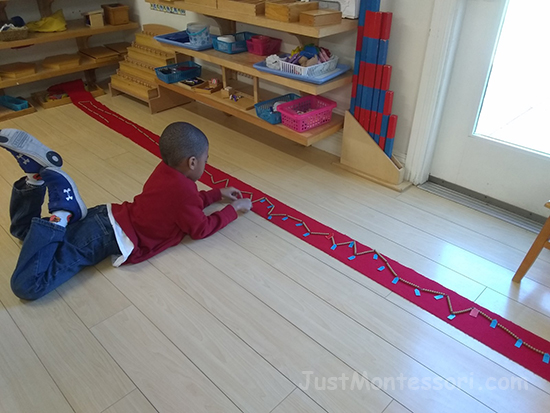
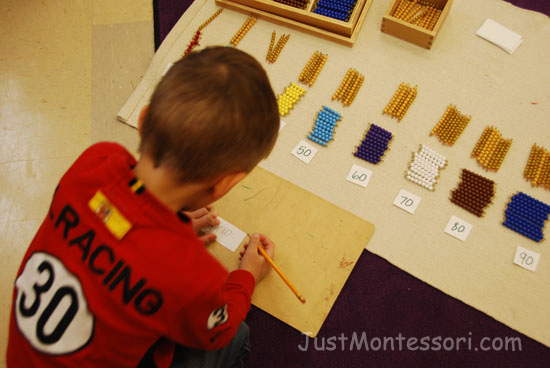
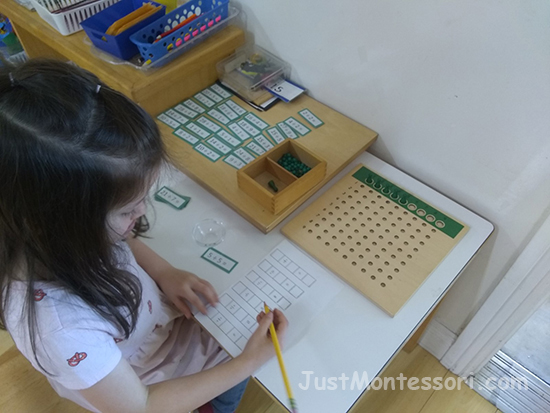
Children use skittles and small beads to solve division problems. If the problem is 28 divided by 4, a child places 4 skittles across the top and counts out 28 beads into the small cup. Next, they give each skittle a bead, one at a time to discover how many each skittle has to find out the answer. This board, as well as the multiplication board, allow a child to see concretely what the operation means. These two boards help children with multiplication and division facts.
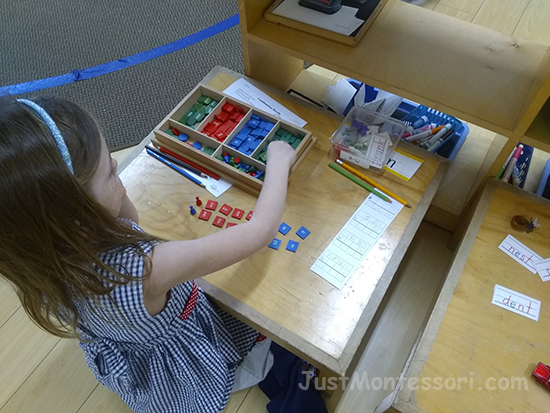
The Stamp Game is used for the operations of addition, subtraction, multiplication, and division. This would follow the golden bead materials as it is more abstract than the concrete beads used in the Bank Game to perform the same operations.
